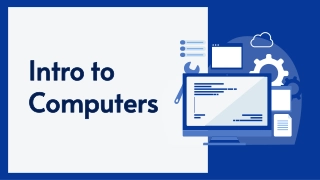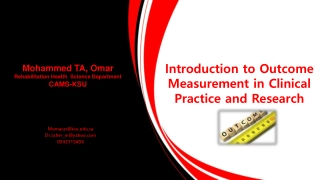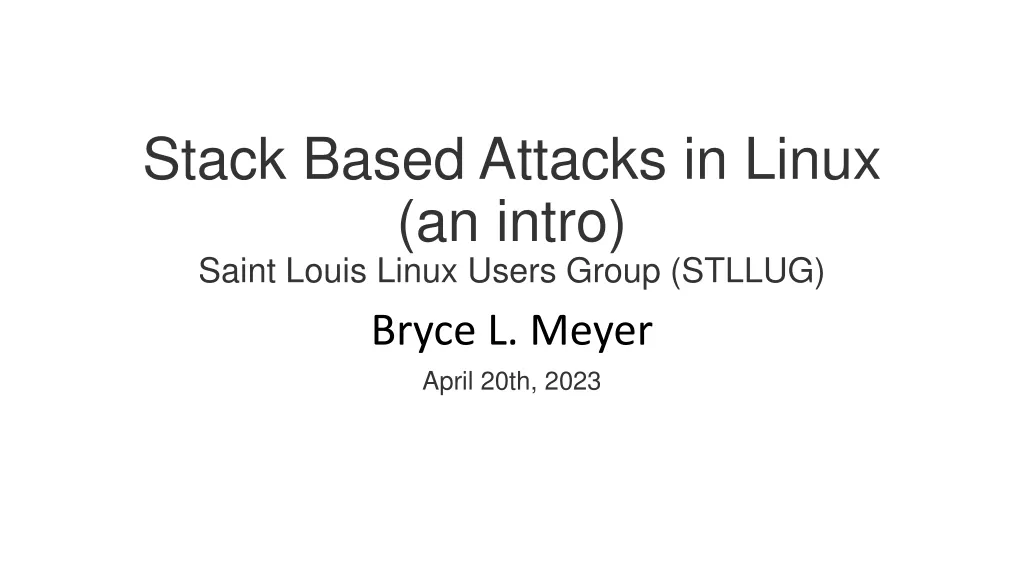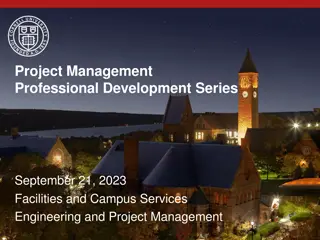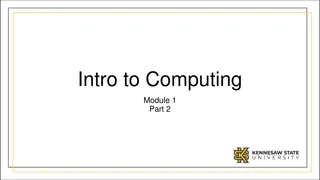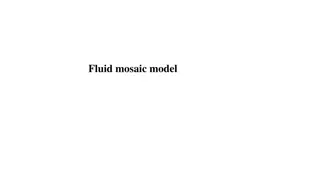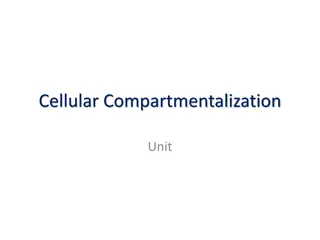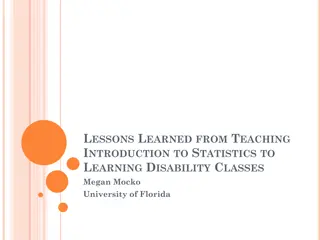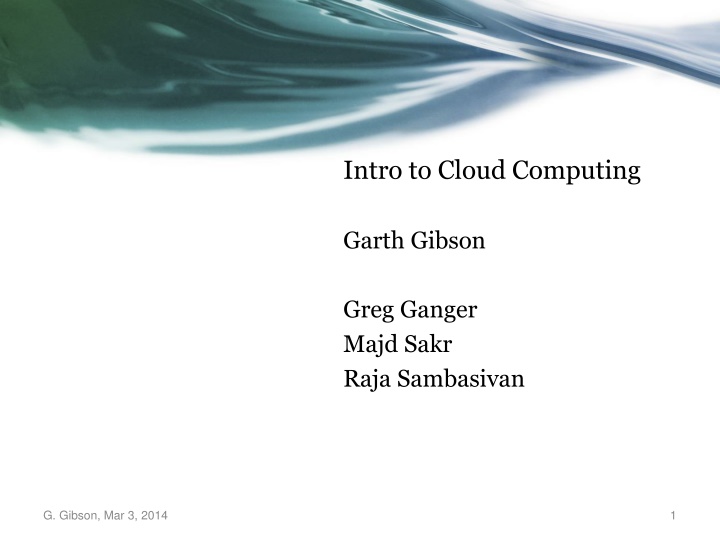
Cloud Computing Essentials: Properties, APIs, Deployment Models
Explore the fundamental aspects of cloud computing, including multi-tenant consolidation, elasticity, and the right API classification (SaaS, PaaS, IaaS). Learn about deployment models such as public, private, community, and hybrid clouds, offering valuable insights into the world of cloud technology.
Download Presentation

Please find below an Image/Link to download the presentation.
The content on the website is provided AS IS for your information and personal use only. It may not be sold, licensed, or shared on other websites without obtaining consent from the author. If you encounter any issues during the download, it is possible that the publisher has removed the file from their server.
You are allowed to download the files provided on this website for personal or commercial use, subject to the condition that they are used lawfully. All files are the property of their respective owners.
The content on the website is provided AS IS for your information and personal use only. It may not be sold, licensed, or shared on other websites without obtaining consent from the author.
E N D
Presentation Transcript
Intro to Cloud Computing Garth Gibson Greg Ganger Majd Sakr Raja Sambasivan G. Gibson, Mar 3, 2014 1
Multi-tenant consolidation with elastic cost conservation Properties of cloud computing: o Computing as a utility always available, basics (power, water, phone) Computing is across the network, accessible by all types of devices o Simplified interface/management use the right API for user needs o Share resources over different users/uses statistical multiplexing o Economies of scale from consolidation better amortized costs o Convert capital costs to operating costs short leases instead of buying o Rapid and easy variation of usage plug in more load on-demand Appearance of infinite resources all users are small users o Pay only for what you use fine grain metered usage determines the bill o Cost conservation: 1 unit for 1000 hours == 1000 units for 1 hour G. Gibson, Mar 3, 2014 2
Consolidation, sharing, elasticity Statistics tells us that average of i.i.d. variables has a decreasing variance independent of the variables distributions (CLT) o Lots of users with widely varying needs apply a considerably less variable load on a huge provider providers can manage overprovisioning well o Users perceive exactly what they need all the time, if their needs are small [1] G. Gibson, Mar 3, 2014 3
The right API SaaS, PaaS, IaaS etc A (flawed) taxonomy is Service, Platform or Infrastructure as a Service o SaaS: service is a complete application (client-server computing) o PaaS: high level (language) programming model for cloud computer Eg. Rapid prototyping languages Turing complete but resource management hidden o IaaS: low level (language) computing model for cloud computer Eg. Assembler as a language Basic hardware model with all (virtual) resources exposed Higher level abstractions simplify matching user tasks and free users from details of provisioning, configuration, fault tolerance etc Lower level abstractions enable apps to achieve user-specific goals Eg. Salesforce (SaaS), Google AppEngine (PaaS), Amazon AWS (Iaas) G. Gibson, Mar 3, 2014 4
Deployment models Real ownership defines deployment models o Public cloud provider sells computing to many unrelated consumers o Private cloud provider is one organization with many largely unrelated components and divisions as consumers (may also be outsourced) o Community cloud providers and consumers are different organizations with strong shared concerns (federations) o Hybrid cloud Multiple providers combined by same consumer Eg., Better availability, overflow from private to public, load balancing to increase elasticity G. Gibson, Mar 3, 2014 5
NIST Architecture [3] G. Gibson, Mar 3, 2014 6
NIST Arch Cont [3] Actors are roles o Auditors should be independent of providers o Carriers are network providers o Brokers mix and match consumers to providers May Value-add e.g. identity mapping, quota enforcement May Mashup different services into a new service May Arbitrage pick the best based on value for money o Broker Eg.: DuraCloud for cloud storage; CloudSwitch for a private PaaS impl d in cloud Provider support for business, resources, portability o Making it easier for consumer to use cloud computing G. Gibson, Mar 3, 2014 7
Larry Ellisons objection defined cloud computing to include everything we already do Ie., timesharing: many users slice up a single big computer o Virtualize the hardware as protected processes with shared storage o Accumulate usage accounting for billing/cost-sharing Ie., client-server computing: program API for communication o Relieve clients from burden of operating, provisioning server o Set abstraction of server function at a natural/constrained level Ie., leasing companies spread the cost over computer lifetime o Rates depend on commitment: 100% -> prime rate loan, lower commitment to pay leads to high interest rates G. Gibson, Mar 3, 2014 8
Client-Service evolution (SaaS) First there was RPC (remote procedure call) o Simple modularity of code in two different failure domains Which became DCE/DCOM/CORBA client-server computing o Set of language free services that modular code uses to Which became .NET/SOAP o Service oriented architecture is principled modularity & interoperability Which became REST/RMI/Thrift o The tools used to reach Software as a Service today G. Gibson, Mar 3, 2014 9
Obstacles to cloud computing use Privacy & security o How is this different from outsourcing payroll, HR, email? o Its new so standard practice, certifications, insurance etc not in place o Its often business critical/proprietary (topline revenue providing) o Uses code running aside other users opens unknown attack channels Privacy in the world tends to rely on regulation o we know encryption is too weak for safety from very big organizations o will cloud also need to rely on regulation for privacy? G. Gibson, Mar 3, 2014 10
Obstacles to cloud computing use Utility issues (power, water, phone, .) o Need very high availability, must be able to get your data out, who is liable for failures? o Little consumers have little leverage on monopolistic providers o Playing multiple providers off against each other may help, standards too o Can you trust your cloud provider? Is your Google-hosted email safe from Google lawyers when you attempt to sue Google for breach of contract? Physical utilities tend to rely on regulation o utilities must meet government standards of service for consumers o will cloud also need to rely on regulation? G. Gibson, Mar 3, 2014 11
Obstacles cont High cost of networking combined with always remote o Telephone/networking moving to per-GB charges (& unlimited minutes) $10/GB over cell (movie rental == download charge) $0.10/GB over internet (disk price == download charge) o With these charges, why move data to compute? AWS offers free bandwidth to data stored and computed in AWS Regional centers allowing customer dark fiber access G. Gibson, Mar 3, 2014 12
Obstacles cont Performance unpredictability & in situ development/debugging o Virtual resources much less tangible than physical resources VM performance depends on core locality, memory availability, network congestion, disk congestion, etc makes scheduling and debugging harder Scaling implementations are hard elastic applications, storage, low latency o Bugs often appear only at scale, in the situation of use (in situ) Debugging facilities best for provider, worst for consumer o Consumer reputation shared with other consumers need trusted auditor Software licensing $/yr/CPU is not elastic and pay as you go G. Gibson, Mar 3, 2014 13
Motivations, definitions, obstacles: readings Reference 1: A View of Cloud Computing, Armbrust, Fox, Griffith, Joseph, Katz, Konwinski, Lee, Patterson, Rabkin, Stoica, Zaharia, CACM April 2010. http://doi.acm.org/10.1145/1721654.1721672 Reference 2: The NIST Definition of Cloud Computing, Mell, Grance, NIST Special Publication 800-145, Sept 2011. http://csrc.nist.gov/publications/nistpubs/800-145/SP800-145.pdf G. Gibson, Mar 3, 2014 14
Optional readings Opt. Reference 3: NIST Cloud Computing Reference Architecture, Liu, Tong, Mao, Bohn, Messina, Badger, Leaf, NIST Special Publication 500-292, Sept 2011. http://collaborate.nist.gov/twiki-cloud- computing/pub/CloudComputing/ReferenceArchitectureTaxonomy/NIST_SP_ 500-292_-_090611.pdf Opt. Reference 4: Understanding the Cloud Computing Stack: SaaS, PaaS, IaaS, Rackspace Support. September 2012. http://www.rackspace.com/knowledge_center/whitepaper/understandin g-the-cloud-computing-stack-saas-paas-iaas Opt Reference 5: PaaS is not middleware of IaaS, Reza Shaffii, Oracle, Jan 2012. https://blogs.oracle.com/rezashafii/entry/paas_is_not_middleware_over G. Gibson, Mar 3, 2014 15


